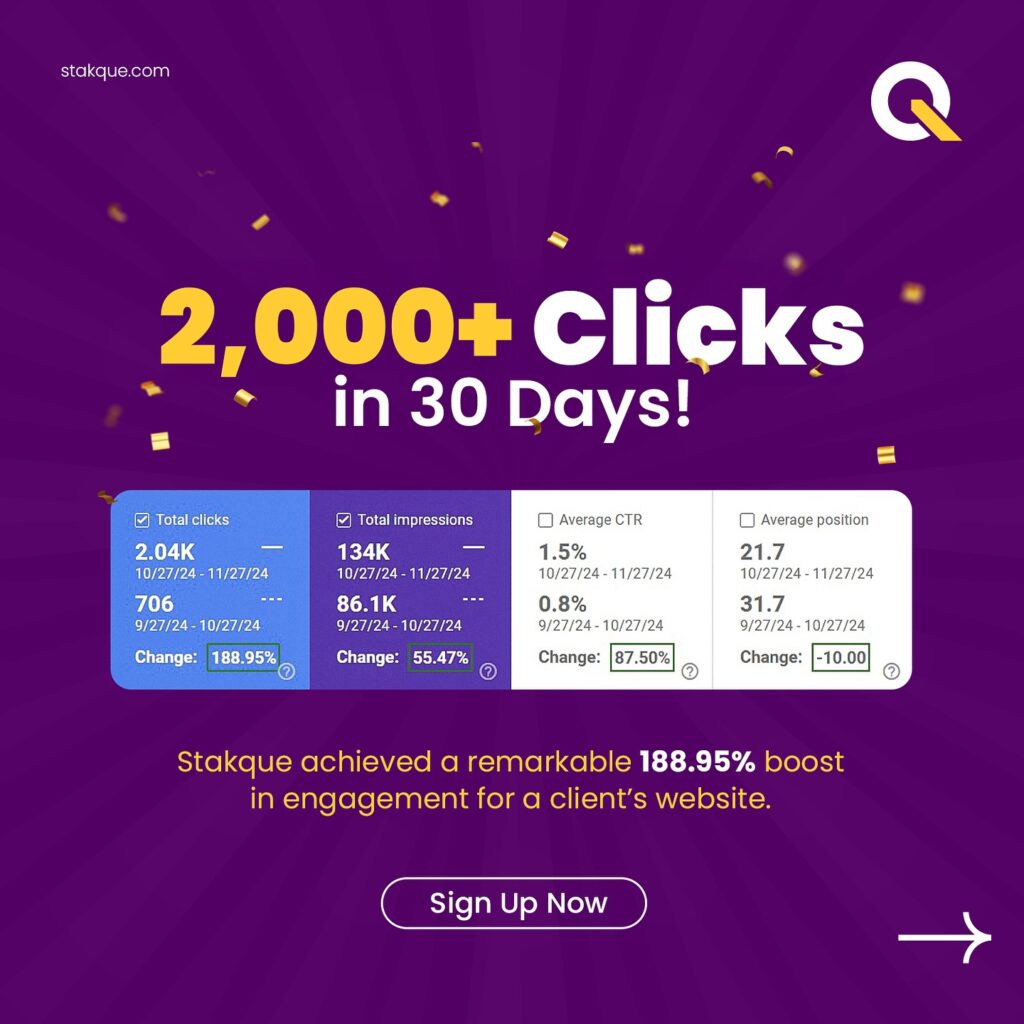Summary
What: Generative AI is a broad category of artificial intelligence systems that create new content, while LLMs are specialized AI models focused on understanding and generating human language.
Who: Business leaders, marketers, developers, and tech professionals seeking to leverage AI technologies effectively.
Why: Understanding these distinctions helps organizations choose the right AI solution and avoid costly implementation mistakes.
When: Critical knowledge for 2025 as AI adoption accelerates across industries.
Where: Applicable across content creation, customer service, software development, and marketing automation.
How: Through neural network architectures trained on massive datasets to generate human-like outputs.
Introduction
Are you confused about whether to invest in Generative AI tools or Large Language Models for your business? You’re not alone—84% of organizations struggle to differentiate between these technologies.
This confusion leads to misallocated budgets, wrong tool selection, and failed AI initiatives that cost companies thousands in wasted resources. The stakes are higher than ever as AI spending is projected to reach $200 billion by 2025.
This comprehensive guide clarifies exactly what separates Generative AI from LLMs, how each technology works, and which solution aligns with your specific needs. By the end, you’ll make informed decisions that drive real business results.
What is Generative AI?
Generative AI refers to artificial intelligence systems that create new, original content across multiple formats. This umbrella term encompasses any AI model capable of generating text, images, video, audio, code, or 3D models.
The technology works by learning patterns from training data and using those patterns to produce novel outputs. Unlike traditional AI that simply analyzes or classifies existing data, generative models create something entirely new.
Key Characteristics of Generative AI
- Multi-modal capabilities: Creates various content types beyond just text
- Creative output: Generates original images, music, video, and designs
- Broad application scope: Extends across industries from healthcare to entertainment
- Diverse model architectures: Includes GANs, VAEs, diffusion models, and transformers
Popular examples include DALL-E for image generation, Midjourney for artistic visuals, and Runway for video creation. These tools demonstrate generative AI’s versatility in producing creative content that didn’t exist before.
According to McKinsey’s 2024 AI Report, generative AI applications have grown by 340% year-over-year, with organizations deploying these systems for design, prototyping, and content workflows. The technology’s ability to automate creative tasks makes it invaluable for marketing automation strategies and digital transformation initiatives.
What are Large Language Models (LLMs)?
Large Language Models represent a specific subset of generative AI focused exclusively on understanding and generating human language. These neural networks are trained on massive text datasets—often billions of parameters—to comprehend context, grammar, and meaning.
LLMs excel at natural language processing tasks including text generation, translation, summarization, and conversational interactions. They’ve revolutionized how machines understand human communication.
Defining Features of LLMs
- Language-specific architecture: Built exclusively for text-based tasks
- Massive parameter counts: Models range from millions to trillions of parameters
- Contextual understanding: Grasps nuance, tone, and complex linguistic patterns
- Transfer learning capability: Pre-trained models adapt to specific use cases
GPT-4, Claude, LLaMA, and PaLM exemplify modern LLMs that power chatbots, content creation tools, and intelligent search systems. These models process sequential text data through transformer architectures that capture long-range dependencies.
The training process requires enormous computational resources—GPT-3 cost an estimated $4.6 million to train. This investment enables LLMs to generate human-quality text that’s increasingly difficult to distinguish from content written by people.
For businesses exploring generative engine optimization services, understanding LLM capabilities is essential for AI-powered search and content discovery strategies.
Key Differences Between Generative AI and LLMs
While LLMs fall under the generative AI umbrella, critical distinctions separate these technologies. Understanding these differences prevents costly implementation mistakes.
Scope and Focus
Generative AI:
- Broad content creation across text, images, video, audio, and code
- Multiple model types including GANs, diffusion models, and transformers
- Diverse applications from drug discovery to game design
LLMs:
- Language-exclusive focus on text understanding and generation
- Transformer-based architecture optimized for sequential data
- NLP-specific tasks like translation, summarization, and conversation
Training Data and Methodology
Generative AI:
- Trained on mixed-modality datasets (images, audio, text combined)
- Uses various training approaches depending on content type
- Requires specialized hardware for visual/audio processing
LLMs:
- Trained exclusively on text corpora from books, websites, and documents
- Employs self-supervised learning on language patterns
- Focuses on next-token prediction and contextual understanding
Output Capabilities
Generative AI:
- Produces visual, auditory, and textual content
- Creates pixel-level images, waveforms, and 3D models
- Enables creative applications beyond language
LLMs:
- Generates text-only outputs in various formats
- Creates articles, code, conversations, and structured documents
- Excels at language-specific tasks but cannot produce images or audio
Use Case Alignment
Generative AI:
- Design and creativity: Logo generation, product mockups, music composition
- Simulation: Synthetic data generation for training other AI models
- Entertainment: Video game asset creation, film production assistance
LLMs:
- Content marketing: Blog writing, ad copy, email campaigns
- Customer service: Chatbots, automated support responses
- Software development: Code generation, documentation, debugging
Organizations implementing SEO and search visibility strategies increasingly rely on LLMs for content optimization, while generative AI handles visual assets and multimedia creation.
How Do They Work? Technical Comparison
Understanding the underlying mechanisms reveals why these technologies excel at different tasks.
Generative AI Architecture
Neural Network Diversity:
- GANs (Generative Adversarial Networks): Two networks compete—one generates content, another evaluates it
- Diffusion Models: Gradually remove noise to create images (like Stable Diffusion)
- VAEs (Variational Autoencoders): Compress data into latent space and reconstruct variations
- Transformers: Attention mechanisms for sequential data processing
The training process involves feeding millions of examples to learn patterns. For image generation, models learn correlations between pixels, colors, shapes, and semantic meaning. This enables creating photorealistic images from text prompts.
Processing Pipeline:
- Input encoding (text prompt or initial data)
- Latent space representation
- Iterative generation process
- Output refinement and upscaling
LLM Architecture
Transformer Foundation:
LLMs use transformer architecture with self-attention mechanisms. This allows models to weigh the importance of different words in context.
Training Stages:
- Pre-training: Unsupervised learning on massive text datasets
- Fine-tuning: Task-specific training on curated data
- RLHF (Reinforcement Learning from Human Feedback): Aligning outputs with human preferences
The model learns statistical relationships between words, predicting the most likely next token based on previous context. With billions of parameters, LLMs capture subtle linguistic patterns including idioms, technical jargon, and cultural references.
Inference Process:
- Tokenize input text
- Process through transformer layers
- Calculate probability distributions
- Sample next token
- Repeat until completion
According to Stanford’s 2024 AI Index Report, LLM performance has improved by 47% on language understanding benchmarks since 2023, demonstrating rapid architectural advances.
For businesses leveraging these technologies in web design and development, understanding these technical foundations ensures realistic expectations and optimal implementation strategies.
Real-World Applications and Use Cases
Both technologies deliver transformative value across industries when deployed strategically.
Generative AI Applications
Creative Industries:
- Graphic design: Logo creation, brand identity development (Adobe Firefly, Midjourney)
- Music production: AI-composed soundtracks for videos and games (AIVA, Soundraw)
- Video editing: Automated scene generation, special effects (Runway ML)
Enterprise Solutions:
- Product design: Rapid prototyping of physical products
- Synthetic data: Training datasets for machine learning models
- Drug discovery: Molecular structure generation for pharmaceuticals
Marketing Applications:
- Visual ad creation for social media campaigns
- Product photography generation without photoshoots
- Branded content personalization at scale
Companies using e-commerce growth strategies leverage generative AI to create thousands of product images quickly, reducing photography costs by 70-80%.
LLM Applications
Content Marketing:
- Blog writing: Long-form articles optimized for SEO
- Social media: Platform-specific post generation
- Email campaigns: Personalized outreach at scale
Customer Experience:
- Chatbots: 24/7 customer support with contextual understanding
- Knowledge bases: Automated FAQ generation and updates
- Sentiment analysis: Customer feedback interpretation
Development Tools:
- Code generation: GitHub Copilot creates functions from comments
- Documentation: Automatic API documentation
- Bug detection: Code review and security analysis
Search and Discovery:
Organizations implementing generative engine optimization use LLMs to optimize content for AI-powered search engines, adapting to how users discover information in 2025.
Common Mistakes When Understanding These Technologies
Avoid these frequent misunderstandings that lead to implementation failures.
Mistake 1: Treating LLMs as Full Generative AI Solutions
Why it’s problematic: LLMs cannot create images, video, or audio despite being “generative”
Correct approach: Use LLMs for text-based tasks and integrate separate generative AI models for multimedia content. Deploy modular systems where each AI handles its specialized content type.
Mistake 2: Expecting LLMs to Replace Human Creativity Entirely
Why it’s problematic: LLMs assist but lack true understanding, original thought, and emotional intelligence
Correct approach: Position LLMs as productivity multipliers that augment human capabilities. Use them for drafting, ideation, and repetitive tasks while humans handle strategy, creativity, and final quality control.
Mistake 3: Ignoring Training Data Biases
Why it’s problematic: Both technologies inherit biases present in training datasets, producing skewed outputs
Correct approach: Implement bias detection protocols, diverse training data sources, and human review processes. Test outputs across demographic groups before deployment.
Mistake 4: Underestimating Computational Costs
Why it’s problematic: Running LLMs and generative AI models requires significant infrastructure investment
Correct approach: Start with API-based solutions (OpenAI, Anthropic, Stability AI) before building internal infrastructure. Calculate total cost of ownership including compute, storage, and maintenance.
Mistake 5: Neglecting Data Privacy and Security
Why it’s problematic: Sending sensitive data to third-party AI services creates compliance risks
Correct approach: Use on-premise models for confidential data, implement data masking, and review vendor security certifications. Ensure GDPR and industry compliance before deployment.
Mistake 6: Skipping Change Management
Why it’s problematic: Teams resist AI adoption without proper training and communication
Correct approach: Develop comprehensive training programs, demonstrate quick wins, and involve stakeholders early. Show teams how AI tools enhance rather than replace their roles.
Case Study: AI Implementation Success
Company: Mid-sized digital marketing agency
Initial Challenge: Manual content creation bottleneck limiting client capacity to 15 accounts. Content quality inconsistent across writers. Production costs consuming 40% of revenue.
Solution Implemented:
Phase 1: LLM Integration for Content Creation
- Deployed GPT-4 API for blog drafting and outline generation
- Implemented Claude for long-form content requiring nuanced understanding
- Created custom prompts library for different content types
Phase 2: Generative AI for Visual Assets
- Integrated Midjourney for social media graphics
- Used Adobe Firefly for product photography variations
- Implemented Runway for video intro sequences
Phase 3: Quality Assurance Process
- Human editors review all AI-generated content
- Brand voice guidelines embedded in prompts
- SEO optimization layer for organic search visibility
Results Achieved:
- Content production increased by 285% in 6 months (from 40 to 154 monthly pieces)
- Client capacity expanded to 38 accounts without additional writers
- Content costs reduced by 52% while maintaining quality standards
- Average content creation time dropped from 4.5 hours to 1.2 hours per piece
- Client retention improved to 94% due to faster turnaround times
Key Success Factors:
- Clear distinction between LLM use (text) and generative AI use (visuals)
- Human oversight maintained quality control
- Iterative prompt engineering optimized outputs
- Team training emphasized AI as collaboration tool
This approach mirrors strategies used by agencies providing comprehensive performance marketing services, where AI augments human expertise rather than replacing it.
FAQ
How does Generative AI differ from traditional AI?
Traditional AI analyzes and classifies existing data using predefined rules and patterns. Generative AI creates entirely new content that didn’t exist before by learning patterns from training data. While traditional AI might identify objects in images, generative AI produces original images. This fundamental difference makes generative AI valuable for creative and content generation tasks rather than purely analytical functions.
Can LLMs understand what they’re writing?
LLMs don’t possess genuine understanding or consciousness. They identify statistical patterns in language and predict probable next words based on training data. While outputs appear intelligent, models lack true comprehension, emotions, or intentionality. They’re sophisticated pattern-matching systems that excel at mimicking human communication styles without experiencing meaning. This limitation requires human oversight for context-sensitive or ethically complex content.
What are the best use cases for choosing Generative AI over LLMs?
Choose broader generative AI solutions when projects require multimedia content creation—product designs, marketing visuals, video editing, music composition, or 3D modeling. These tasks demand models trained on visual or audio data that LLMs cannot process. Select generative AI for creative applications where output format extends beyond text. For businesses building comprehensive digital presence, combining both technologies delivers optimal results.
How much does it cost to implement these technologies?
Costs vary dramatically based on deployment approach. API-based solutions charge per token/request: GPT-4 costs $0.03 per 1K tokens, Midjourney subscriptions start at $10/month. Self-hosted open-source models require GPU infrastructure ($5,000-$50,000+ initially) plus ongoing compute costs. Enterprise implementations with custom training range from $50,000 to millions depending on scale. Start with SaaS solutions to prove ROI before infrastructure investment.
Are there ethical concerns with Generative AI and LLMs?
Yes, significant ethical considerations include: bias in training data producing discriminatory outputs, copyright questions around AI-generated content, potential job displacement in creative industries, deepfakes and misinformation risks, environmental impact of training massive models, and data privacy when processing sensitive information. Responsible deployment requires bias testing, transparent disclosure of AI-generated content, and human oversight for high-stakes decisions.
How do I choose between Generative AI and LLMs for my business?
Evaluate based on output requirements: Choose LLMs if 80%+ of your needs involve text creation, customer communication, content writing, or code generation. Select broader generative AI platforms if you need visual designs, audio content, video editing, or product prototyping. Most organizations benefit from both—LLMs for text workflows and specialized generative AI for multimedia. Assess your team’s technical capabilities and budget constraints before committing.
What programming skills are needed to implement these technologies?
For API integration, basic Python knowledge suffices—most platforms offer simple SDK libraries. No-code platforms like ChatGPT, Claude, and Midjourney require zero programming skills. Custom implementations need intermediate Python, understanding of REST APIs, and familiarity with frameworks like LangChain or Hugging Face Transformers. Enterprise deployments with fine-tuning require machine learning expertise, GPU management skills, and MLOps knowledge. Start with no-code solutions before building custom systems.
How will these technologies evolve in the next 2-3 years?
Expect multimodal convergence where single models handle text, images, and video simultaneously (like GPT-4V and Gemini). Cost reduction through model efficiency improvements will democratize access. Specialized industry models will emerge for healthcare, legal, and finance. Increased regulation will standardize AI transparency and safety. Real-time generation speeds will improve dramatically. Organizations maintaining flexibility to adopt emerging technologies will maximize competitive advantage.
Conclusion
Understanding the distinction between Generative AI and LLMs empowers organizations to deploy the right technology for specific challenges. Generative AI encompasses all content creation AI across modalities, while LLMs specialize exclusively in language understanding and generation.
Key takeaways:
- LLMs are a subset of generative AI focused on text-based applications
- Choose LLMs for content writing, customer service, and conversational interfaces
- Select broader generative AI for multimedia creation including images, video, and design
- Avoid common mistakes by maintaining human oversight and understanding technical limitations
- Start with API solutions to prove ROI before infrastructure investment
The most successful AI implementations combine both technologies strategically. LLMs handle text workflows while specialized generative AI creates visual assets, delivering comprehensive solutions that transform business operations.
As AI capabilities expand through 2025 and beyond, organizations that understand these fundamental differences will make informed investment decisions, avoid costly implementation errors, and unlock transformative competitive advantages. The future belongs to businesses that thoughtfully integrate AI as a force multiplier for human creativity and expertise.
Ready to explore how AI technologies can transform your digital strategy? Discover how leading organizations leverage these tools for measurable business results.








